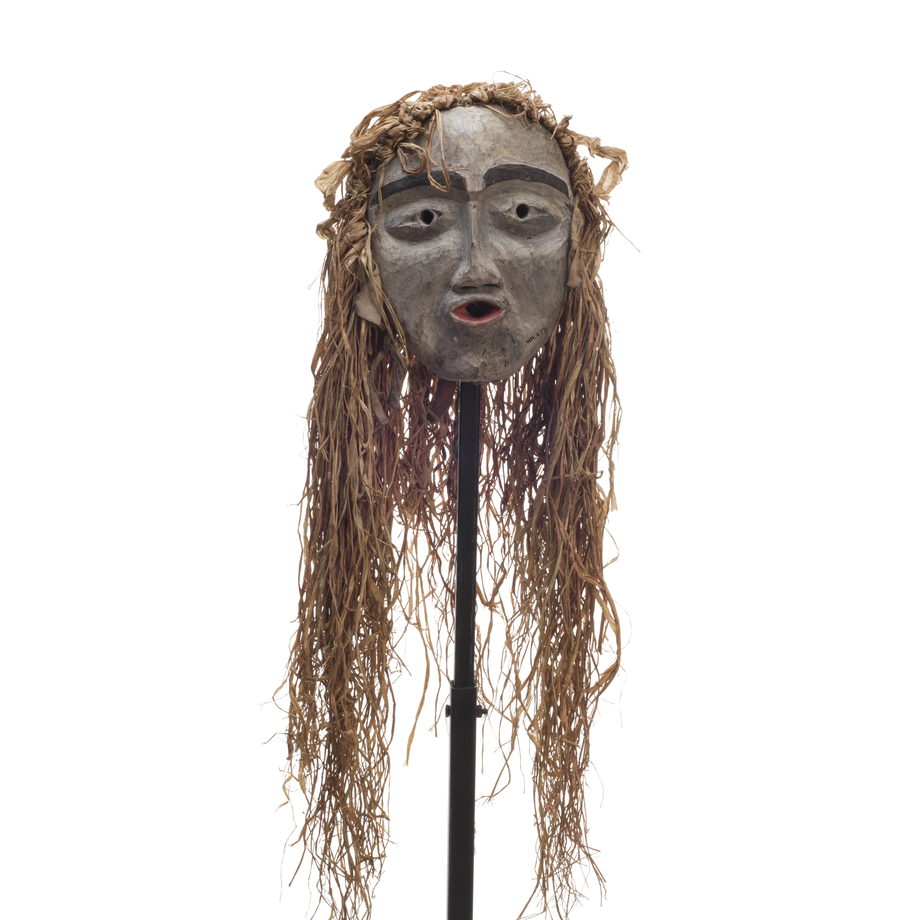Atłak´ima
Dance of the Forest Spirits Mask - Twin
Catalogue Information
Provenance
Owned by Harry Mountain until its forced surrender to Indian Agent William Halliday on March 25, 1922. Halliday later displayed and photographed the seized pieces at the Parish Hall in Alert Bay. After doing an inventory, he crated the items in June, and at the end of September he shipped some of them to the Royal Ontario Museum in Toronto, on long-term loan from the National Museum of Man (now the Canadian Museum of History). They remained in the possession of the ROM until the NMM pulled its loan and returned the pieces to the Nuyumbalees and U'mista cultural societies in 1988.
Materials
Wood; Paint; Raffia; Fabric; Metal, Nails; Rope
Accession Number
88.06.005
Physical Description
Atłak´ima (Dance of the Forest Spirits) Mask that possibly represents one of the twin children of Mama’yut´łamalaga (Woman Giving Birth). The mask belongs to Harry Mountain from the Mamalilikala and it has his last name “Mountain” penciled on the back of the mask. The humanoid mask has long black eyebrows that are somewhat thin, possibly hinting that it is female. The inside of the pursed lips is painted red. This is a common characteristic of Atłak´ima beings and it signifies wildness and coming from the forest. Under the chin there are traces of black paint, possibly a goatee, indicating that the original mask was male. The whole mask has been repainted and the paint underneath appears to be dark, a black or dark grey. The eyes are pierced for the wearer to see through. The mask has a trim of long raffia imitating traditional alternating dyed red and natural red cedar bark decorations that signify regalia belonging to the sacred T´seka or Winter Ceremonies. This small mask is likely a recycled mask, repainted quickly for the Atłak´ima.
